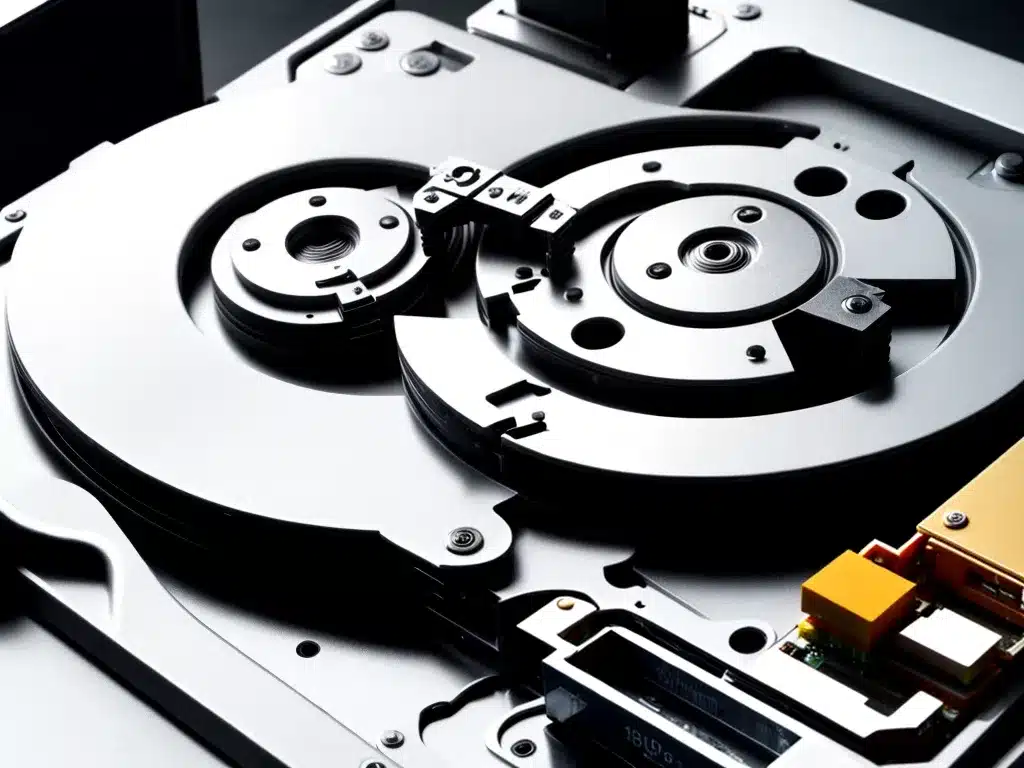
Solid state drives (SSDs) have become increasingly popular in recent years due to their faster speeds and smaller form factors compared to traditional hard disk drives (HDDs). However, one question that often comes up regarding SSDs is how long data stays on an SSD after deletion.
How SSDs Store Data
To understand how deletion works on an SSD, it’s important to first understand how SSDs store data. Unlike HDDs, SSDs do not store data on spinning platters. Instead, SSDs use flash memory chips to store data.
When you save a file to an SSD, the file is broken down into pages and blocks. A page is usually 4KB in size, while a block consists of 128 pages or 512KB. The SSD controller maps logical block addresses to physical blocks on the flash chips.
SSD Garbage Collection and Trim
When you delete a file on an SSD, the file is not immediately erased. Rather, the operating system marks the file’s blocks as invalid. This helps speed up the deletion process. However, the actual data remains on the SSD until the garbage collection process reclaims the invalid blocks.
Garbage collection is performed by the SSD controller. It erases invalid blocks so they can be reused to store new data. Garbage collection runs in the background and can be configured to run when the drive is idle.
The TRIM command also helps speed up garbage collection. When you delete a file, the operating system sends a TRIM command to the SSD, telling it which blocks are no longer needed. The SSD can then erase those blocks in advance during garbage collection, improving write speeds.
Factors That Determine Data Persistence
How long deleted files remain on an SSD depends on several factors:
-
Drive capacity – On a full drive, deleted data may remain until the blocks it occupies are needed for new data. On an empty drive, garbage collection will erase blocks more quickly.
-
Drive usage – Heavily used drives will perform garbage collection less frequently, maintaining deleted data longer. Lightly used drives can erase data faster.
-
File size – Larger files often occupy more blocks, persisting longer until every block is erased. Smaller files may be erased almost immediately.
-
File system – Some file systems, like NTFS, support TRIM to help delete data faster. Other file systems erase data less efficiently.
-
Delete method – Files deleted through the recycle bin or CMD may take longer to be erased than files deleted permanently using Shift+Delete.
Recovering Deleted Data from SSDs
While SSDs make targeted data recovery more difficult due to garbage collection actively erasing blocks, recovery is still possible for a limited time:
-
Files deleted through the recycle bin can often be recovered as long as the bin hasn’t been emptied.
-
Unencrypted files erased normally can potentially be recovered for 1-2 weeks on average. Quick action increases chances.
-
With forensic tools, encrypted or permanently erased files can sometimes be recovered for up to 2 months, but this becomes less likely over time.
-
Once all blocks containing file data have been overwritten by new data, recovery becomes practically impossible.
Maximizing SSD Longevity
To maximize SSD lifespan and health, it’s recommended to:
-
Enable the TRIM command – TRIM speeds up block erasing after file deletion on supported operating systems.
-
Keep sufficient free space – At least 10-20% free space allows efficient garbage collection, preventing read/write speed reduction.
-
Limit drive writes – SSDs can withstand thousands of write/erase cycles, but excessive writes will shorten longevity.
-
Avoid file fragmentation – Defragmenting files frequently causes excessive writes on SSDs, reducing drive life.
In summary, deleted files can remain intact on SSDs for up to 1-2 weeks typically, but may persist for 1-2 months without being overwritten. Exact persistence depends on the SSD’s condition and usage. With the right tools, recently deleted data can potentially be recovered from SSDs, but chances decrease drastically over time. By understanding how SSD garbage collection works, you can maximize drive performance and extend SSD lifespan.












